Search engine optimization for food blogs isn’t magic.
Needle-moving results are the product of:
- Good, thoroughly tested recipes
- Tenacity and consistent effort
- Strategic editorial planning
- Authoring posts that meet Google’s helpful content system requirements
- Competitive Core Web Vitals
- Satisfying search intent with each post
- Understanding recipe schema and other schema basics
- Quality WordPress support (that’s us!)
Again and again we hear from new and prospective Foodie Digital members that they just don’t know where to start when it comes to SEO.
Knowing where you’re at, and where you’re going reduces overwhelm so that you can instead start taking action.
This post is that action plan for you.
We want to help you identify where you’re at, and then outline the steps and actions you need to take to help you begin to accomplish your SEO goals, as quickly as possible.
What stage of the SEO process are you in with your food blog?
Once you’re clear on the stage you’re in, you’ll know exactly where to put your time, and what to work on—or what to invest in—next.
Our approach to food blog and recipe SEO
Why is SEO so hard?
We’re asked this all of the time.
It’s because SEO is dual in nature. You’re expected to do a thousand little things right each day while also keeping your eye on the big picture. Throw in life and consistently creating new amazing recipes into the mix, and it’s incredibly easy to de-prioritize SEO or get caught up in its weeds.
That’s why we don’t drop a 65-page SEO audit report in your inbox. A report like that is challenging to digest, and even harder to implement at home alone behind your computer.
Guided implementation is how we approach food blog and recipe SEO at Foodie Digital.
10 SEO recommendations that aren’t always true
We put together a list of 10 blanket SEO recommendations that we often hear about or read about at Foodie Digital that we know from experience don’t actually apply to everyone.
Like any recipe you test, success with SEO for your food blog takes time, effort and a commitment to see the process through. SEO is not a quick fix and more art than science, in our opinion.
Your willingness to execute and test concepts, monitor and interpret data, plus your commitment to produce compelling food and recipe content that’s original and helpful and that also satisfies search intent all matter a great deal.
In the past, a lot of fuss has been made about keywords for food blogs. Today using the right keywords contextually in blog posts is only half the battle.
A significant amount of SEO happens off the post (or page) and under the hood, making Core Web Vitals, user experience design, schema use, crawl accessibility, a great category structure, topical authority, and properly configured plugins all powerful and important.
Let’s begin!
Stage 1: Start
A strong technical foundation is necessary to succeed in food blogging. Investing time and effort in the Start stage pays off in the long run.
During our series of onboarding audits for new Foodie Digital members we catch a lot of mistakes with how food blogs are set up, which we share here for your benefit.
Here is how to start off (or restart) on the right foot:
- Use a fast WordPress web host
- Enable SSL (i.e., https)
- Install and configure Yoast SEO
- Install and configure a credible recipe card plugin
- Sign up for Google Analytics and Google Search Console
- Submit your sitemap in Google Search Console
- Use the block editor
- Get set up to optimize and compress images
- Use a simple permalink structure
- Decide on a category structure
Use a fast WordPress web host
Your choice of WordPress web host has a big effect on site speed, up-time, security, your sanity, and much more. Take extra time and research the best web hosts for food blogs. The extra due diligence will pay-off in the long run.
Enable SSL (i.e., https)
A secure website address that begins with https is a must. Credible, professional web hosts hand out free SSL certificates like candy so don’t wait to make the change. If your web hosting provider has a dashboard or cpanel that you can access, it’s very likely you can enable SSL yourself. Otherwise, hop on live chat with your web host and ask that SSL is enabled.
Once SSL is enabled, log into WordPress > Settings > General and replace http with https in the WordPress Address and Site Address fields.
Then, watch out for mixed content.
Enabling SSL (i.e., https) can cause a cascade effect, known as mixed content. Mixed content is when you have both http and https on site. Once you switch to https, everything, including pages, posts, images and ad network tags, needs to be running over https.
Resolving mixed content requires expert-level understanding of WordPress.
To resolve mixed content we strongly recommend working with a seasoned WordPress web developer who can complete the fix for you.

Install and configure Yoast SEO
Yoast SEO is an easy and completely free way to begin basic SEO. Once you’ve installed the Yoast SEO plugin, pay special attention to the plugin’s configuration settings under:
- Yoast SEO > Settings > General > Site Representation
- Yoast SEO > Settings > Categories & Tags
The settings should be adapted to suit your site’s content and taxonomies. Auditing how Yoast SEO is configured is one of the very first SEO audit tasks we do for new Foodie Digital members.
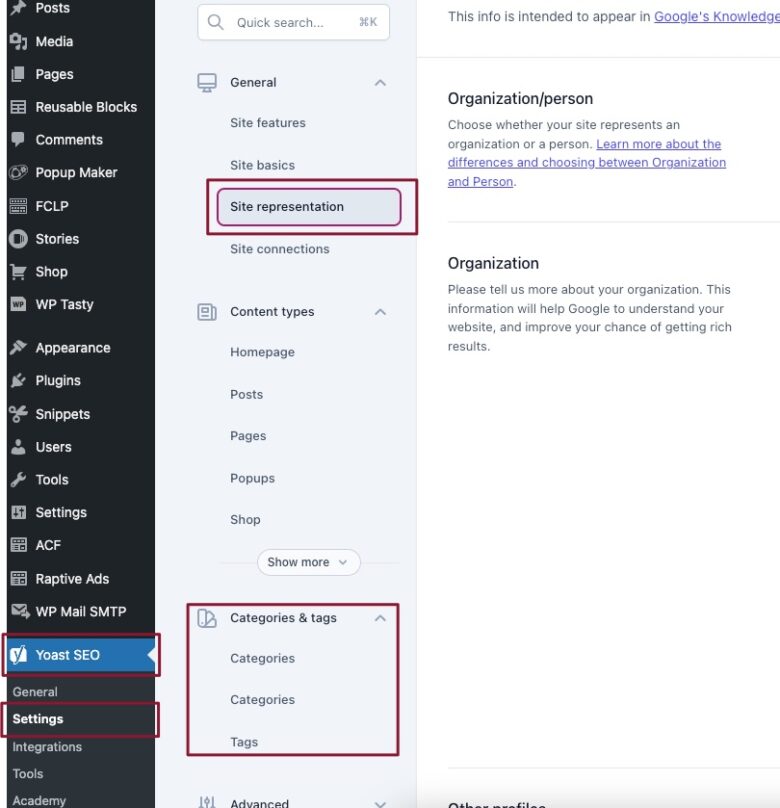
Install and configure a credible recipe card plugin
Using a recipe card plugin grants you the keys to the Google kingdom. Structured data, more specifically JSON-LD Schema Markup, unlocks a long list of possibilities for your recipe content. Rich snippets for your recipes is just one of the many big wins.
Which recipe card plugin is the best and easiest to use?
We’ve broken down the pros and cons, costs and main benefits of the best WordPress recipe card plugins to help you make a decision about which option is the right one for your business.
In summary, we back:
Sign up for Google Analytics and Google Search Console
Google Analytics and Google Search Console are two must-use tools. Sign up for both of these tools right away. They’re leaned on heavily in the remaining stages.
Submit your sitemap in Google Search Console
Submitting your food blog’s sitemap to Google is a basic but important task for SEO. It’s one of the first things we verify when a new member joins Foodie Digital because it’s a task that’s so easily overlooked.
In Google Search Console, go to Index > Sitemap and submit your food blog’s sitemap.

Use the block editor
Far too many food bloggers still use the classic editor. We’re big fans of WordPress’ block editor and all of the ways it makes publishing easier.
But before you switch to the block editor, it’s important to verify that all of your plugins are compatible with the block editor. A lot of plugins are not, so do your homework first.
Most of the time, a simple Google search will reveal if a plugin is compatible with the block editor, but if nothing turns up we recommend contacting the plugin developer directly.
Get set up to optimize and compress images
Optimized and compressed images impact site speed and performance significantly by reducing the size of each image in a post or on a page while still delivering high-quality images.
If you have a library of uncompressed images, install an image compression plugin, such as ShortPixel, right away. Or, consider using Cloudflare Enterprise through your web host for image optimization. Most professional web hosts offer Cloudflare Enterprise as an add-on for a small additional monthly fee.
Use a simple permalink structure
Using dates and category name in your URL isn’t ideal. Ending your URL with the post name is the preferred permalink structure in the food and recipe niche.
For example:
- foodiedigital.com/seo-tips-for-food-bloggers (yes!)
- foodiedigital/2020/11/24/seo-tips-for-food-bloggers (no!)
- foodiedigital/2020/seo/seo-tips-for-food-bloggers (no!)
But, if your website has been around for years changing the URL structure will result in 404 errors for readers and search engines. Search rankings can also be affected if top-traffic generating posts all of a sudden lead to 404 errors.
To remove the date and/or category name from your URLs, we strongly recommend working with a seasoned WordPress web developer who can test and then set up necessary redirects.
Create strong category structure
Is your category structure long, jumbled and all over the map? Unfortunately, a messy category structure impacts food blog SEO in several ways.
Unclear or cluttered site categories confuse the reader (and robots!) and results in a negative user experience. This affects how long a reader stays, or dwells, on your site and their desire to clickthrough to more content. It also hurts your crawl accessibility.
A site with great category structure, does the opposite.
Readers can quickly and easily find what they want, which improves dwell time and pages per session if your internal linking strategy is strong. Also, the better your category structure, the easier Google can access, crawl and index your content.
Plus, to power a dynamic recipe index (i.e., https://www.walderwellness.com/recipes/) your category structure needs to be in tip top shape.
Again, if your website has been around for years changing the category structure will result in 404 errors for readers and search engines. Search rankings can also be affected if top-traffic generating posts all of a sudden lead to 404 errors.
To clean up your category structure, we strongly recommend working with a recipe taxonomy specialist (that’s us!) who can test and then set up necessary redirects.
Stage 2: Prepare
With the start stage done, it’s time to prepare.
To succeed in food blogging, it’s important to understand niche-specific concepts and strategies. Food blogging is a competitive niche: the more you know, the more you grow.
Here’s a list of niche-specific concepts to study:
- E-E-A-T
- Google’s helpful content system
- Keyword research
- Competitor SEO
- Satisfying search intent
- Nofollow compliance
- Editorial planning
- Internal linking
- Crawl budget
- Link building
- Site speed and Core Web Vitals
E-E-A-T
Good E-E-A-T (experience, expertise, authoritativeness and trustworthiness) both on and off your website can potentially help improve Google rankings.
Set aside 20 minutes to read through our helpful overview E-E-A-T and authorship for food blogs. Then, consider all of the ways you can use your unique E-E-A-T to your advantage.
For example, are you a subject matter expert in gluten free, dairy free or vegan recipes? Maybe it’s meal planning or make-ahead meals. It’s important to send clear signals to Google about who you are, what you do, and what you’re a trustworthy authority in.
Then bake your subject matter expertise into your category structure, your editorial calendar and your site’s user experience. Google wants to offer the best possible answers and results to user queries, so if you’re an authority in plant-based diets or desserts make it crystal clear.
Google’s helpful content system
Google’s helpful content system aims to better reward content where visitors feel they’ve had an original, helpful, satisfying experience. Content that doesn’t meet a visitor’s expectations, or content that has been created for ranking well in search engines primarily won’t perform as well under the helpful content system.
In short, don’t keyword chase and don’t write for robots.
Ultimately, content that satisfies the reader first and foremost, keeps the robots happy with you (and your content) too.
Learn basic keyword research
A lot of seasoned food bloggers say that they wish they published SEO-optimized recipes earlier, rather than publishing only the recipes they wanted to. Striking a balance between pleasing readers, search engines and yourself is important.
Keyword research helps.
One of the best and most affordable keyword research tools available is KeySearch.
With that said, not all of the posts you publish will turn into huge SEO wins; and they shouldn’t. It’s impossible to hit a home run each time you step up to bat.
That’s why you should always write for your readers. Content is highly varied. Some types are great for optimization while others aren’t. This doesn’t mean that the latter type isn’t worth creating. If it serves your audience and connects you with your readers, it’s of value.
Competitor SEO
Keyword research is a necessary and important part of SEO for food blogs, and a specialty of ours at Foodie Digital. But far too many food bloggers stop after doing initial keyword research.
You have to go a step further and look at the content your competition has already created.
The food blogs that show up on the first page of Google for the keywords you’d like to target are the competition. For example, if Bon Apetit, Allrecipes, Delish, The Food Network, The Kitchn, and other big name publishers own the first page of Google’s search results, and if their recipes have hundreds of star ratings, consider chasing another keyword opportunity.
But if you think you can compete, and potentially outrank another food blog (or publisher) for a keyword opportunity over time, inspect the content and structure of the competitor’s post to find your recipe’s unique angle or offering.
Your post and recipe will need to be as comprehensive, as informative, satisfy search intent, and earn star ratings to get a spot in the featured recipe results.
Satisfying search intent
Search intent (also known as user intent) is the practice of more accurately describing your food and recipe content for readers so that it matches what they want in that EXACT search moment.
It’s a big part of successful on-page SEO for food blogs. Learn to satisfy search intent in your SEO title, recipe card title and post body copy, and you will get more traffic.
Nofollow compliance
Compliance isn’t the sexiest topic, but it’s an important one. According to Federal Trade Commission and Competition Bureau of Canada regulations, if you:
- Create sponsored content for companies
- Use affiliate links
- Review free products
you’re required to apply a nofollow tag to external links that link back to the sponsor company’s website, products and social media accounts.
Wisely, the recipe card plugins Tasty Recipes, Create and WP Recipe Maker have added the nofollow tag functionality to their product offering, though the experience of applying a nofollow tag is a little different in each plugin. For detailed instructions on how to tag a link nofollow in the block editor, read our post about nofollow compliance.
Editorial planning
How far in advance do you plan your food blog’s posts?
We encourage Foodie Digital members to set their editorial calendars for the month ahead by the 5th of the month they’re in (i.e., September’s editorial calendar is planned for by August 5th).
This gives them (and us!) time to do valuable keyword and competitor research and adjust for opportunities.
Internal linking
Internal links establish a hierarchy of information on your site. Strategic internal linking is very important for food blogs because of the volume of content food bloggers create.
With a solid internal linking strategy in place, you’ll proactively show Google the posts and pages on your site that are related, as well as which articles are the most informative and valuable to your audience. One of the best resources on the power and importance of strategic internal linking is this Whiteboard Friday article and video from Moz. It’s a must watch.
Crawl budget
Your site has a crawl budget and it needs to be used to your advantage.
If your site is relatively new, we encourage you to simply study the concept of crawl budget for now. But if your site is medium-sized, or contains a lot of expired content (i.e., weekly meals plans from 2017), it may be time to consider how to optimize your crawl budget.
Full disclosure: optimizing crawl budget is an advanced technical SEO tactic. We strongly recommend working with a seasoned SEO professional when it comes to crawl budget.
Link building
Link building is when you earn links from other sites to your own. It’s one of the biggest factors associated with higher rankings in Google.
In the absence of a financial partnership or receiving free product from a company in exchange for exposure, you can earn a dofollow backlink for your food blog.
A dofollow backlink passes the SEO strength of the site that’s linking out on to the page or post that it’s linking to. Nofollow backlinks do not pass on SEO strength. Nofollow backlinks are great to increase exposure, but they have no SEO effect.
The goal with backlinks is to have diversity in the domains linking to you.
Earning a backlink from the same site over and over is nice, and may send you referral traffic—which is good too!—but when it comes to straight up SEO, it’s better to acquire links from lots of different credible sites in your niche.
Site speed and Core Web Vitals
Put simply, site speed and Core Web Vitals matter for food blog SEO. At best, performance optimization is a puzzle. If there’s one area of technical SEO to invest in and hire out, this is it.
Stage 3: Assemble
Assemble is where the magic happens!
In the Assemble stage, you begin to consistently create high-quality content that leans on the niche-specific concepts and strategies you now know.
- Create consistently
- Fill out the fields in your recipe card plugin
- Write alt text for each image in a post
- Write an SEO title for each post
- Write a meta description for each post
- Write keyword-rich URLs
- Use an H1 tag
- Use H2s
- Fix broken internal and external links
- Be selective about the number of images in a recipe post
- Add internal links strategically
Create consistently
The most successful Foodie Digital members are the ones who consistently create new content.
Not every post published rockets to the top of the search rankings. Still, these members are undeterred. Week in and week out they do the work.
Fill out the fields in your recipe card plugin
Completeness is key when it comes to success with recipe structured data. That and correct recipe attribution matters. The task entering recipe ingredients, instructions, course, cuisine, keywords and diet into a recipe card plugin is admittedly a bit tedious but, in this case, short term pain is long term gain. Be thorough, it pays off.
Again, the three recipe card plugins we back,
each have different settings and recipe meta data. We encourage you to study your recipe card’s settings closely and then use your tool’s settings to your advantage.
Write alt text for each image in a post
Alt text is an important factor for SEO.
It’s leaned on by Google in situations where an image isn’t displayed to a reader or isn’t visible to a reader (i.e., the visitor is using a screen reader for accessibility).
In an image’s alt text field, describe in sentence form exactly what’s in the image so that search engines and people can make sense of it. Write unique alt text for each image in a post.

Write an SEO title for each post
Do not leave a post’s SEO title empty.
You apply a post’s SEO title in your SEO plugin (i.e., Yoast SEO). Where possible, include keywords in your SEO title as well as your brand/company name (i.e., | Foodie Digital) at the end of the SEO title. Your SEO title does not need to be the exact same as your article title.
The SEO title appears in the web browser tab. It plays a significant role in search and also appears on Google’s search engine results page. The length of your SEO title should not exceed 75 characters, fewer than 40 characters is ideal.
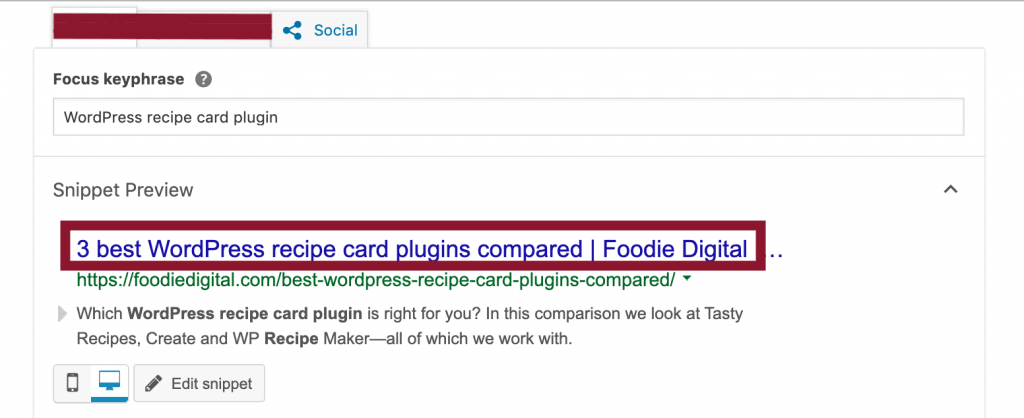
Write a meta description for each post
Do not leave a post’s meta description field empty.
Like the SEO title, you apply a post’s meta description in your SEO plugin (i.e., Yoast SEO). A meta description should summarize a page’s content and entice a reader to clickthrough. As a general rule, the length of a meta description shouldn’t exceed 156 characters.
Also, a post’s meta description can be re-written after a post has been published.
If you notice that a particular post is highly ranked in Google’s search results, but that the clickthrough rate isn’t great, consider rewriting your meta description to attract more conversions and clickthroughs over time.
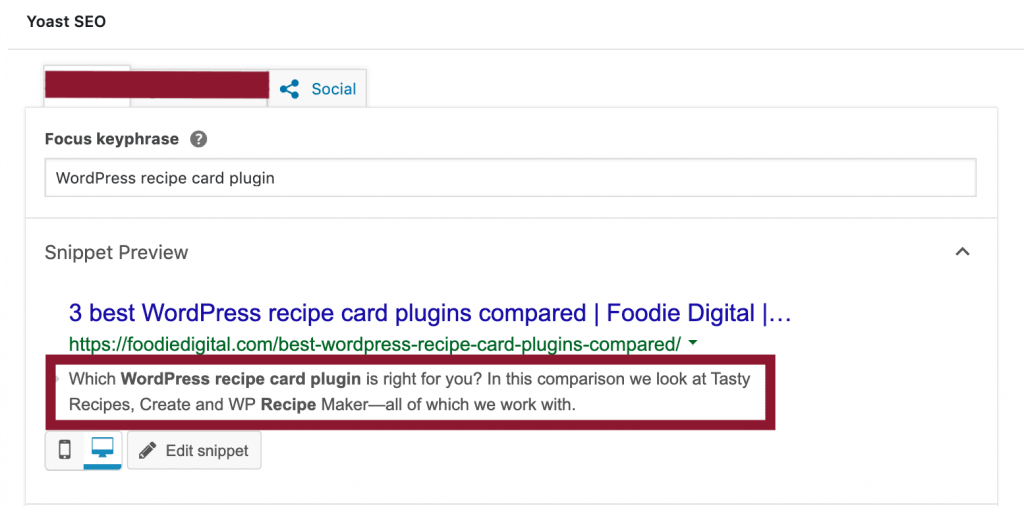
Write short, keyword-rich URLs
You don’t have to use the default URL that’s automatically created for a post in WordPress. You can edit a post’s slug before it’s published, preferably to include a keyword or two.
Where possible, keep your URL length to fewer than 90 characters—between 58 and 60 characters is ideal. It’s also best to create an evergreen URL so that it never has to change, even if one day you update the article title or the article information.
Use an H1 Tag
An H1 or heading 1 is an HTML tag that indicates to search engines that a heading on a webpage, or in a post, is the primary heading. Each page or post needs only one H1 tag. An H1 (as well, as an H2, H3 and so on) is a header that gives context to a page or post.
Most Wordpress themes will automatically include an H1 in the post template so adding an additional H1 is not necessary (or recommended).
Use H2s
H2s are a great way to improve the reading experience on mobile. Remember, most mobile Internet users skim through content. H2s are a great way to break content into separate chunks, making sentences and paragraphs easier to read.
Don’t pepper your content with too many H2s though and don’t stuff keywords into H2s (that’s called over-optimizing). H2s are a natural way to add additional, contextually relevant keywords in a post.
Fix broken internal and external links
Internal links are links from one post or page on your site to another. These are helpful to users and search engines since they help them discover more content on your site. External links are when you link to sources outside of your URL.
A food blog riddled with broken internal and external links can hurt the user experience, cause visitors to bounce, and impact SEO.
A word of warning: broken link checker plugins are notoriously bloated and can impact site speed. Consider using a third party tool, such as Screaming Frog to stay on top of your broken links.
Be selective about the number of images in a recipe post
Images are one of the most important tools for communicating a recipe’s appeal. Using multiple images in a post is also a tactic for for increasing display ad impressions, and can help keep readers on your site longer. But a food blog with too many images (and ads too!) or with images that are too large will have longer loading time.
Image compression is key. Also resizing full-width images from, say 4000px down to 1600px width is helpful, especially when image quality is the exact same.
Be intentional with the number of finished recipe and process shots you use in a post. Aim for between 5 and 7 images, if possible.
Add internal links strategically
Again, Moz’s Whiteboard Friday video on maximizing internal links sums up why you should apply internal links strategically, rather than in a way that’s willy-nilly. In short, today it’s all about link engagement.
Stage 4: Rise
In Rise, recurring tasks take centre stage.
Rise is where you begin to make smart data-informed decisions. It’s the stage where you begin to study what’s working and monitor metrics that matter.
A word of caution: one of the biggest mistakes that food bloggers make is looking at their data in isolation. When you oversimplify your data or look at your analytics each day, or even on a weekly basis, you can miss the magic that’s happening around you.
SEO is a slow burn. Progress takes time.
We recommend tracking certain metrics monthly. We also recommend making decisions off of quarterly traffic results at an absolute minimum.
- Metrics to track and monitor monthly
- Watch the clickthrough rate for top posts
- Audit your list of plugins regularly
- Repair existing content consistently
- Earn star ratings for recipes
Metrics to track and monitor monthly
Instead of guessing or making an emotional gut decision about why a recipe isn’t performing well, look at your Google Analytics and Google Search Console data. Numbers don’t lie.
At Foodie Digital we regularly track key metrics for members, split by new and returning visitors. This includes (amongst others):
- Average session duration
- Average pages per session
- Returning visitor percentage
If these user signals are weak, it’s a good indication that you’re not satisfying search intent.
Watch the clickthrough rate of top posts
Improving the clickthrough rate of a recipe post or article by even a percentage point or two has the potential to significantly boost organic traffic over time.
In Google Search Console > Performance > Search Results, use the Pages tab to view the clickthrough rate (CTR) percentage for individual posts. There are a number of different advanced tactics that can be applied to improve a post’s clickthrough rate.
The most simple is to re-write the post’s SEO title and meta description so that they’re more enticing and click-worthy. Updating a post to more closely match search intent is another.
Audit your list of plugins regularly
We have yet to meet a new Foodie Digital member that isn’t hanging on to a few unused, deactivated plugins. Unused plugins can negatively affect your website’s loading speed, which is an important ranking factor for SEO. It’s easy to forget about deactivated or unused plugins so audit your plugin list every few months and remove what’s unused.
Repair existing content consistently
One of the great things about recipes is that they don’t expire. A recipe published 10 years ago is just as delicious today as it was back then.
Optimizing old content can be a big win, but not at the expense of losing forward momentum. It’s important to consistently create new content.
Helping members strike a balance between creating new content and repairing existing posts is a big part of what we do at Foodie Digital.
The big question is how to know which post(s) to repair.
- Begin by looking at the clickthrough rate for your top 25 posts. A post with less than a 2% clickthrough rate may be a good candidate for repair. Always look to see what the competition is doing/has done before you begin a repair.
- Look at posts on the second page of Google’s search results. These posts are within striking distance of a spot in the featured recipe results and may be a good candidates for repair. Always look to see what the competition is doing/has done before you begin a repair.
Earn star ratings for recipes
To be eligible to earn star ratings for recipes you must use a recipe card plugin. Recipe star ratings are an excellent form of social proof, and give readers confidence that your recipe is a winner. Star ratings also help a recipe stand out in the search results.
Don’t be shy—ask readers to leave star ratings for your recipes (but do not incentivize readers to give recipe reviews). Also regularly test to make sure that a star rating is easy to leave for a recipe.
To be clear, there’s no ranking benefit for using structured data, such as recipe star ratings. What structured data does do—in the form of a rich snippet and featured snippets—is provide the possibility for increased clickthrough and conversion rates.
Stage 5: Bake
First, celebrate the fact that you’re here! It takes years of hard work to reach the Bake stage.
In the Bake stage, you consistently cycle through tasks in both Assemble and Rise, and find new, creative ways to develop your site’s topical authority.
Most Foodie Digital members are in the Bake stage — and beyond.
Did you find this post helpful?
Post a comment or ask us a question in comments. We read your comments and respond always!
Note: Foodie Digital participates in affiliate programs for select recipe card plugins and hosting providers. The opinions we share are based on our own in-depth research, and the ongoing need for our members to use SEO tools that are future-proofed, credible, professional and well supported.



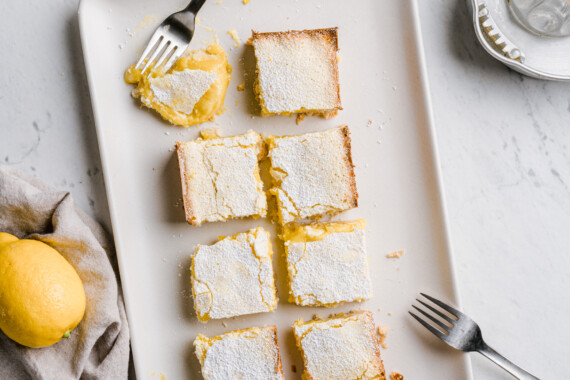
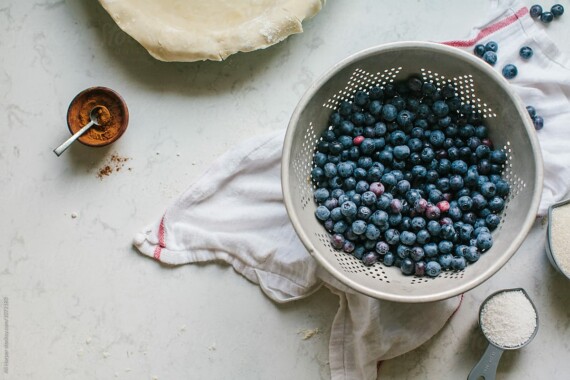


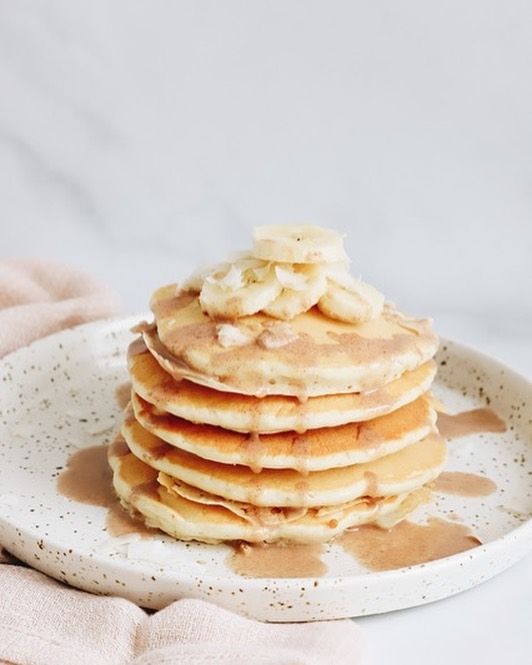





Nice post
Great post Liane, thanks for sharing your tips and experience. I am working on starting a new foodblog as I have moved on from my old blog. This came very handy and am looking forward to implementing some of your tips. Thanks
Such a detailed post! Thanks for this 🙂
Love this post Liane. The best part about being a Foodie Digital member is that you have walked us through each aspect of this post over time so it has been manageable for our workload. Thank you! We have learned so much from you all.
Very informative and helpful article, I am really very satisfied to read this article.
Hi Liane Walker, I appreciate you for your blog. It’s really helpful. Food blog is very competitive niche but with some tricks , we can win the competition. You mentioned all the important factors that can help to rank on google. Thanks
This was a super interesting and helpful read – thanks guys! Lots to learn. Thank you for making this information accessible to us tech mere mortals, and explaining it in a way that’s can be understood.
Thank you for sharing this post. It is very informative. So much information to take in.
So many helpful nuggets of info in this post. I had no idea that you could find the clickthrough rate of a post in GA. I also had no idea that it should be a considered metric when choosing where to focus my update energy. Thank you!